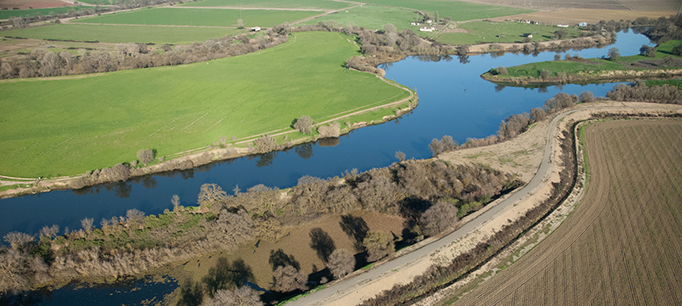Last week, Governor Brown announced a new approach to managing the Sacramento-San Joaquin Delta. For the past eight years the state’s focus has been on the highly controversial Bay Delta Conservation Plan (BDCP). That plan was intended to be a “big fix,” simultaneously improving the health of the troubled Delta ecosystem and the reliability of water supplies for the cities and farms in the Bay Area, Southern California, and the San Joaquin Valley that depend on water exported from the Delta.
The BDCP was intended to meet the 2009 Delta Reform Act’s requirement to manage the Delta for co-equal goals of water supply reliability and ecosystem health. To achieve these goals, the BDCP aimed to restore more than 100,000 acres of habitat and build tunnels underneath the Delta to ship water that now goes through the Delta’s channels to the giant pumps at the Delta’s southern edge. The tunnels would improve the quality of water exports and, importantly, make exports less susceptible to disruption from levee failures. By taking a comprehensive approach to ecosystem restoration, BDCP hoped to receive a 50-year permit for water exports.
But in the end, uncertainty over the benefits of the restoration—particularly in light of a changing climate—made a 50-year permit unacceptable to federal and state regulators.
The governor’s new strategy is to disentangle ecosystem restoration from water supply infrastructure improvement. Under a new program, entitled California Water Fix, the state would proceed as planned with the tunnel project, and with restoration of 2,000 acres of habitat to mitigate the impact of construction. As before, the tunnels would be funded by the water users who use Delta exports.
To improve the health of the Delta, the state will implement California EcoRestore, a scaled-down effort that focuses on completing or improving projects already required by federal regulators to reduce the environmental impacts of water exports. This effort would begin restoring 30,000 acres of high-value habitat in the next three years—an ambitious timeline. The funding for this work is already available—largely from the same water users. (It is worth noting that funding for ecosystem restoration under BDCP had yet to be identified.)
Both Water Fix and EcoRestore face daunting challenges. For Water Fix, financing may become an issue. Under BDCP, the 50-year permits would have provided greater regulatory certainty and thus greater water supply reliability for those who depend on water exports. Reverting to the regulatory status quo—and associated uncertainties—reduces the overall value of the project and may make some water suppliers reluctant to invest.
For EcoRestore, the key challenge lies in meeting the ambitious three-year time frame for initiating restoration projects. Our recent assessment of environmental stressors affecting the Delta found that institutional fragmentation is a major obstacle to improving ecosystem health.
For example, one of the proposed projects that has been in the works for years—restoration of McCormack-Williamson Tract, an island in the northern Delta—will require the acquisition of 10 permits, consultations on 10 statutes, and demonstration of consistency with nine programs under 18 state, federal and local agencies. (An overview of the numerous agencies that need to provide regulatory approval and oversight for Delta projects can be found in Stress Relief: Prescriptions for a Healthier Delta Ecosystem, see Table 4, page 19).) The current timetable for EcoRestore has this project beginning early next year—a tight timeline indeed.
As we’ve described elsewhere, the BDCP’s original habitat restoration goals were likely too ambitious—conditions in the Delta limit the availability of lands likely to have a major impact on ecosystem health. So it is reasonable to scale back from the original plan. But to successfully improve habitat in anywhere near the timeframe proposed, EcoRestore must be accompanied by significant reforms that integrate and streamline management, most notably the permitting process (see our recommendations).
Presumably, these and many other issues will be addressed in the environmental documentation that will be released in June. However, as commonly occurs in management of the Delta, changing course is never easy, and always brings new challenges.





